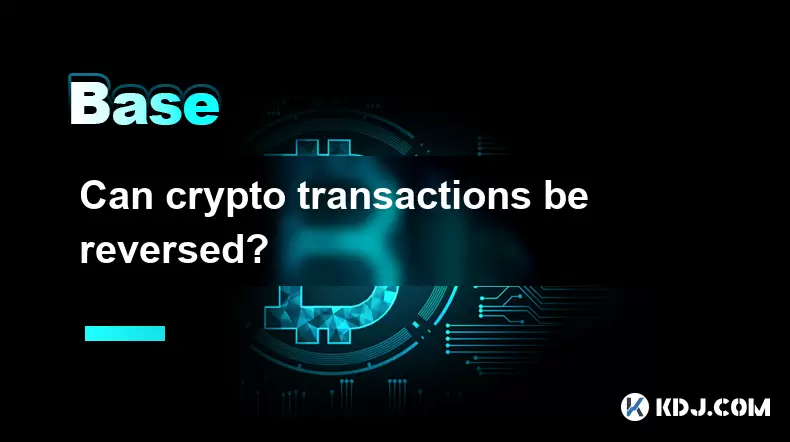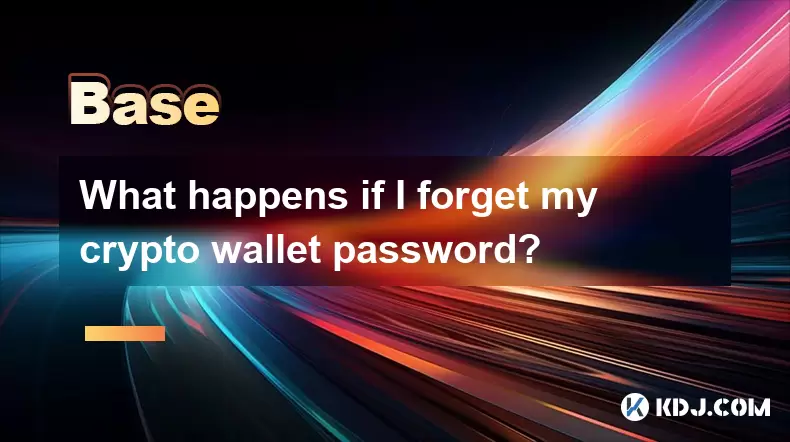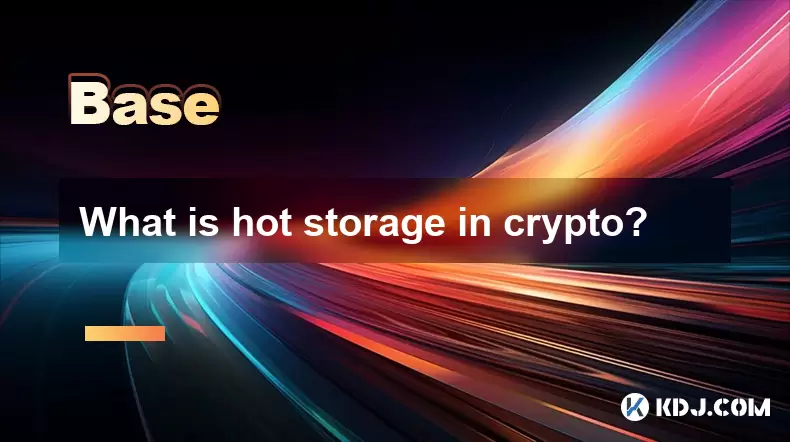-
 Bitcoin
Bitcoin $119100
-0.58% -
 Ethereum
Ethereum $4278
-0.66% -
 XRP
XRP $3.164
-1.81% -
 Tether USDt
Tether USDt $1.000
0.01% -
 BNB
BNB $811.7
0.11% -
 Solana
Solana $176.3
-3.92% -
 USDC
USDC $0.9999
0.01% -
 Dogecoin
Dogecoin $0.2255
-4.43% -
 TRON
TRON $0.3480
2.60% -
 Cardano
Cardano $0.7828
-3.40% -
 Hyperliquid
Hyperliquid $43.59
-4.94% -
 Chainlink
Chainlink $21.34
-3.88% -
 Stellar
Stellar $0.4443
-0.97% -
 Sui
Sui $3.697
-5.60% -
 Bitcoin Cash
Bitcoin Cash $596.5
4.16% -
 Hedera
Hedera $0.2498
-5.10% -
 Ethena USDe
Ethena USDe $1.001
-0.03% -
 Avalanche
Avalanche $23.11
-4.00% -
 Litecoin
Litecoin $121.1
-1.75% -
 Toncoin
Toncoin $3.397
0.42% -
 UNUS SED LEO
UNUS SED LEO $9.002
-1.29% -
 Shiba Inu
Shiba Inu $0.00001307
-4.57% -
 Uniswap
Uniswap $11.20
0.30% -
 Polkadot
Polkadot $3.901
-4.75% -
 Cronos
Cronos $0.1698
3.07% -
 Ethena
Ethena $0.8122
-3.72% -
 Dai
Dai $1.000
0.03% -
 Bitget Token
Bitget Token $4.416
-1.13% -
 Monero
Monero $263.9
-0.82% -
 Pepe
Pepe $0.00001130
-7.37%
What are the APR and APY for liquidity mining?
In liquidity mining, APR (Annual Percentage Rate) ignores compounding, while APY (Annual Percentage Yield) accounts for it, resulting in a higher return reflecting actual earnings from reinvested interest. Understanding this difference is crucial for making informed investment decisions.
Mar 12, 2025 at 07:20 pm

Key Points:
- APR (Annual Percentage Rate) and APY (Annual Percentage Yield) are both used to represent returns in liquidity mining, but they calculate differently.
- APR is a simpler calculation, representing the annual interest earned without compounding.
- APY accounts for compounding, reflecting the actual return earned over a year if interest is reinvested.
- Factors influencing APR/APY in liquidity mining include the liquidity pool's size, the trading volume, and the platform's fee structure.
- Understanding the difference between APR and APY is crucial for making informed decisions in liquidity mining.
What are the APR and APY for liquidity mining?
In the dynamic world of decentralized finance (DeFi), liquidity mining has emerged as a popular strategy for users to earn passive income. Two key metrics, APR and APY, are frequently used to represent the potential returns, but they differ significantly in their calculations. Understanding this difference is critical for making sound investment choices.
Understanding APR (Annual Percentage Rate)
APR is a straightforward calculation of the annual interest rate earned without considering the effects of compounding. It simply takes the total interest earned over a year and divides it by the initial principal investment. For example, if you provide liquidity and earn 10% in a year, your APR is 10%. This calculation ignores the impact of reinvesting the earned interest.
Understanding APY (Annual Percentage Yield)
Unlike APR, APY takes into account the effect of compounding. Compounding means that the interest earned is reinvested back into the principal, generating even more interest in subsequent periods. APY reflects the actual return you would receive over a year if the interest is consistently reinvested. Because of compounding, APY is always higher than APR.
How APR and APY differ in Liquidity Mining
The difference between APR and APY becomes more pronounced over longer periods and with higher interest rates. Imagine an APR of 10% paid out monthly. In this case, the first month’s interest is 10%/12 ≈ 0.83%. The second month, you earn interest not just on the original principal, but also on the accumulated interest from the first month. This effect, repeated monthly, makes APY significantly higher than the stated APR.
Factors Affecting APR/APY in Liquidity Mining
Several factors influence the APR and APY offered in liquidity mining programs. These include:
- Liquidity Pool Size: Larger pools often have lower APR/APY due to increased competition for rewards. Smaller pools, on the other hand, might offer higher returns.
- Trading Volume: High trading volume in the liquidity pool generally leads to higher returns as more transaction fees are generated and distributed to liquidity providers.
- Platform Fees: The platform's fee structure plays a significant role. Higher platform fees can translate to higher returns for liquidity providers, affecting both APR and APY.
- Token Volatility: The price fluctuations of the tokens in the liquidity pool can impact your returns. Impermanent loss, a risk inherent in liquidity provision, can reduce your overall profit, lowering your effective APR and APY.
- Competition: The number of liquidity providers directly impacts the distribution of rewards. Increased competition can decrease individual returns.
Step-by-Step Example of APR vs. APY Calculation (Simplified)
Let's assume a simplified scenario to illustrate the difference:
- Scenario: You provide $1000 worth of liquidity to a pool offering a 10% APR, paid monthly.
- APR Calculation: Your annual return is simply 10% of $1000, or $100.
APY Calculation (Simplified):
- Month 1: You earn $8.33 (10%/12 * $1000).
- Month 2: You earn approximately $8.36 (10%/12 * $1008.33).
- This process repeats for the year. The final APY will be slightly higher than 10%. A precise calculation requires a compounding formula.
It's important to note that this is a simplified example. Actual calculations can be far more complex due to the changing nature of liquidity pools and token values.
Common Questions:
Q: Is a higher APR always better than a higher APY?
A: No. A higher APY indicates a better return after considering compounding, even if the APR is lower. Always compare APY values when assessing liquidity mining opportunities.
Q: Where can I find APR and APY information for liquidity mining?
A: Most decentralized exchanges (DEXs) and liquidity pools display the current APR and APY for each pool on their platforms. Look for information on the pool details page.
Q: How often are APR and APY updated?
A: APR and APY are dynamic and fluctuate frequently based on the factors mentioned above. They are usually updated in real-time or at least very frequently.
Q: Are APR and APY guaranteed?
A: No, APR and APY are not guaranteed. They are subject to change based on market conditions, pool size, and other variables. Impermanent loss is also a significant risk factor.
Q: What is impermanent loss, and how does it affect APR/APY?
A: Impermanent loss is the potential loss incurred when the price of the assets in a liquidity pool changes significantly relative to each other. This loss reduces your overall profit, leading to a lower effective APR and APY.
Disclaimer:info@kdj.com
The information provided is not trading advice. kdj.com does not assume any responsibility for any investments made based on the information provided in this article. Cryptocurrencies are highly volatile and it is highly recommended that you invest with caution after thorough research!
If you believe that the content used on this website infringes your copyright, please contact us immediately (info@kdj.com) and we will delete it promptly.
- Ethereum Layer-2 Scaling Competition Heats Up as ETH Breaks $4K
- 2025-08-12 10:30:12
- Meme Coins, Investment, and Token Burns: What's Hot in 2025?
- 2025-08-12 10:30:12
- BlockDAG, Chainlink, Hedera: The Cryptos Enterprises are Eyeing
- 2025-08-12 09:30:12
- Dogecoin's Wild Ride: Big Holders, Price Push, and What's Next for the Meme Coin
- 2025-08-12 08:30:12
- Coin Master Board Adventure: Free Energy and the Thrill of the Board
- 2025-08-12 08:50:12
- Bitcoin to $133,000? Here's What the Experts Are Saying
- 2025-08-12 08:30:12
Related knowledge

Can crypto transactions be reversed?
Aug 10,2025 at 01:35am
Understanding the Immutability of Blockchain TransactionsCryptocurrency transactions are built on blockchain technology, which is designed to be immut...

What happens if I forget my crypto wallet password?
Aug 09,2025 at 08:50am
Understanding the Role of a Crypto Wallet PasswordA crypto wallet password serves as a critical security layer that protects access to your digital as...

What is the difference between cold and hot storage?
Aug 12,2025 at 01:01am
Understanding Cold Storage in CryptocurrencyCold storage refers to offline methods of storing cryptocurrency private keys, ensuring they are not expos...

What is hot storage in crypto?
Aug 11,2025 at 07:08am
Understanding Hot Storage in CryptocurrencyHot storage refers to cryptocurrency wallets that are connected to the internet. Unlike cold storage soluti...

What is the best crypto portfolio tracker?
Aug 10,2025 at 05:08am
Understanding the Role of a Crypto Portfolio TrackerA crypto portfolio tracker is a digital tool designed to help investors monitor the performance of...

Why is my crypto transaction taking so long?
Aug 11,2025 at 11:35am
Understanding Blockchain Network CongestionWhen a crypto transaction is delayed, one of the most common causes is network congestion on the blockchain...

Can crypto transactions be reversed?
Aug 10,2025 at 01:35am
Understanding the Immutability of Blockchain TransactionsCryptocurrency transactions are built on blockchain technology, which is designed to be immut...

What happens if I forget my crypto wallet password?
Aug 09,2025 at 08:50am
Understanding the Role of a Crypto Wallet PasswordA crypto wallet password serves as a critical security layer that protects access to your digital as...

What is the difference between cold and hot storage?
Aug 12,2025 at 01:01am
Understanding Cold Storage in CryptocurrencyCold storage refers to offline methods of storing cryptocurrency private keys, ensuring they are not expos...

What is hot storage in crypto?
Aug 11,2025 at 07:08am
Understanding Hot Storage in CryptocurrencyHot storage refers to cryptocurrency wallets that are connected to the internet. Unlike cold storage soluti...

What is the best crypto portfolio tracker?
Aug 10,2025 at 05:08am
Understanding the Role of a Crypto Portfolio TrackerA crypto portfolio tracker is a digital tool designed to help investors monitor the performance of...

Why is my crypto transaction taking so long?
Aug 11,2025 at 11:35am
Understanding Blockchain Network CongestionWhen a crypto transaction is delayed, one of the most common causes is network congestion on the blockchain...
See all articles

























































































